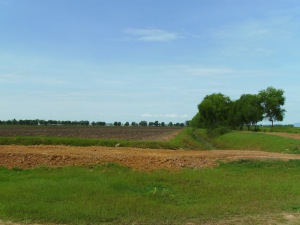Introduction : the relevance of landscape reading in Agrarian System Analysis and Diagnosis
The concept of landscape
The definition of landscape is likely to vary based on the approach. The word was originally borrowed from Dutch paintings of the countryside. In geography, landscape can be defined as the portion of territory that can be seen by one individual, at a given time and from a given point of view. Landscape is almost always the result of the interaction between a natural component and an anthropic component.
What is the relevance of landscape reading ?
 | Landscape reading is the first step of Agrarian System Analysis and Diagnosis. Guided by the question "why",this is a stage of understanding the agro-ecosystem and zoning. This stage totally relies on researchers' capacity to formulate the hypothesis for the whole study. |
This stage will give an insight into the questions linking farmers and their environment. Knowing how farmers use their environement is important for the next steps, both historical study and economic analysis of production systems. The main goal of landscape reading is to explain how farmers use their environment.









